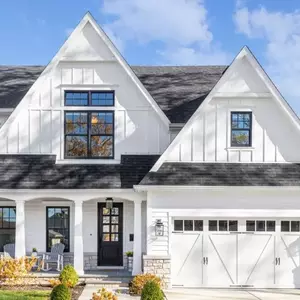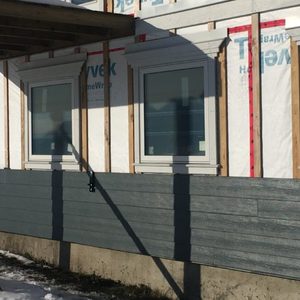
Writing in Fine Homebuilding magazine 22 years ago, Massachusetts builder Robert Weatherall described the pleasure of advancing from rough framing to running exterior trim. “It’s like decorating a cake or coloring in a picture,” he said. “After the rush of framing lumber and plywood, the trim is the welcome stage of finer joinery that can bring out the house’s character.”
The first step, Weatherall said, was to choose good stock, and that hasn’t changed in the intervening two decades. But the D-select pine he favored at the time is only one of many trim options available to carpenters now, and probably one of the least common. Clear, high-quality stock has become more expensive and harder to find while a number of alternatives have become available, including plastics, engineered wood, fiber cement, and even stock made from an industrial waste called fly ash.
Builders must still balance performance, cost, appearance and availability to best fit the project and the budget. More recently, builders have faced added pressures. Not only are more of them looking for materials with a minimal environmental impact but also lower levels of embodied carbon as the industry slowly faces up to its role in global climate change.
Builders contacted by GBA offered a variety of opinions. Some have embraced newer options, such as engineered wood, PVC or poly fly-ash lumber. Others have used those alternatives only grudgingly. Few seemed committed to a single product. And what about Weatherall after all these years? Now a designer and no longer a carpenter in the field, he’s still a wood guy. He can’t bring himself to spec plastic trim and is put off by its “antiseptic” look, even as he’s mindful of wood’s inherent weaknesses. “It’s hard to take the right path,” he says.
Weekly Newsletter
Get building science and energy efficiency advice, plus special offers, in your inbox.

This article is only available to GBA Prime Members
Sign up for a free trial and get instant access to this article as well as GBA’s complete library of premium articles and construction details.
Start Free TrialAlready a member? Log in















9 Comments
Very good, Scott. A clear, accurate, and unprejudiced review of trim and siding options. Although little is written on the cellular PVC siding, a relatively new extension of the PVC trim line.
Not sure it is covered directly in the above, so curious about thoughts on Accoya (acetylated wood) product. Considering for a retrofit project for use as clapboards. https://www.accoya.com
Bcalio1,
Scott wrote about it in a separate blog a few years ago: https://www.greenbuildingadvisor.com/article/the-rise-and-fall-of-a-miracle-wood
Thanks! I will default to searches before asking next time! Much appreciated.
Where would PlyGem BuildReady trimboard fall on this list? Is that a good product? Does it need to be sealed after cutting? Thanks
Jay,
PlyGem describes BuildReady as cellular PVC, so it would be similar to other products of that type. Field cuts do not have to sealed, according to the company.
Fly ash often contains heavy metals. So care with dust & debris from using fly-ash based materials is a decent idea.
Nice overview Scott,
Every couple of years I call the lumber yard and get a linear cost for various siding and trim options. I've yet to put that into a spreadsheet, or added the pros & cons. That would be a nice tool if someone gets to it...
Scott, I was curious about your comment on silica in PolyAsh siding. I did not know the material had silica, given the binders are fly ash and vinyl. So I corresponded with the technical folk at Roayl (they bought Boral) and learned indeed the material has about 5-percent silica. However, this still compares favorably to the 45-to-75-percent silica in fiber cement materials.
Log in or become a member to post a comment.
Sign up Log in